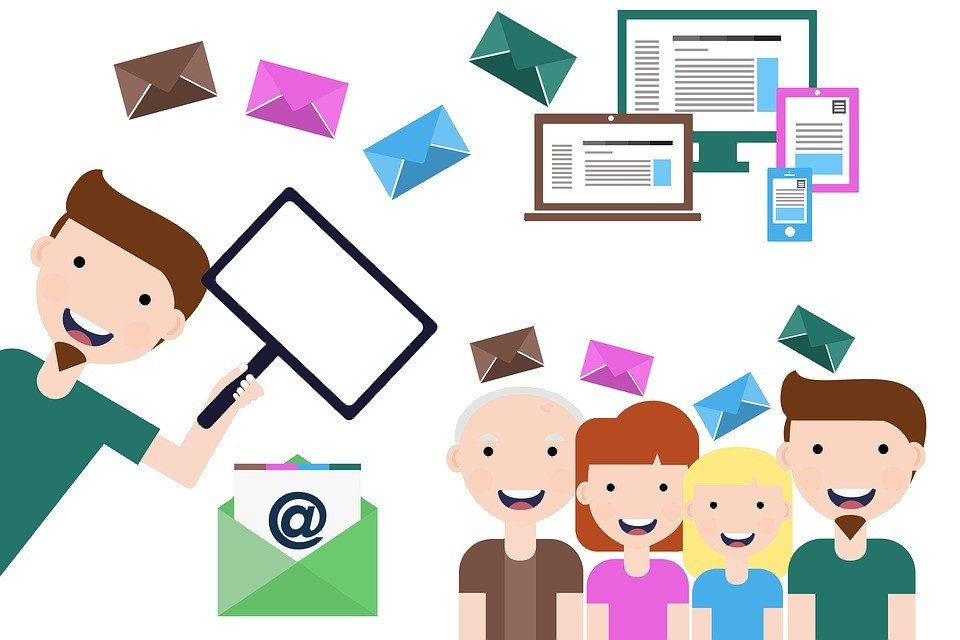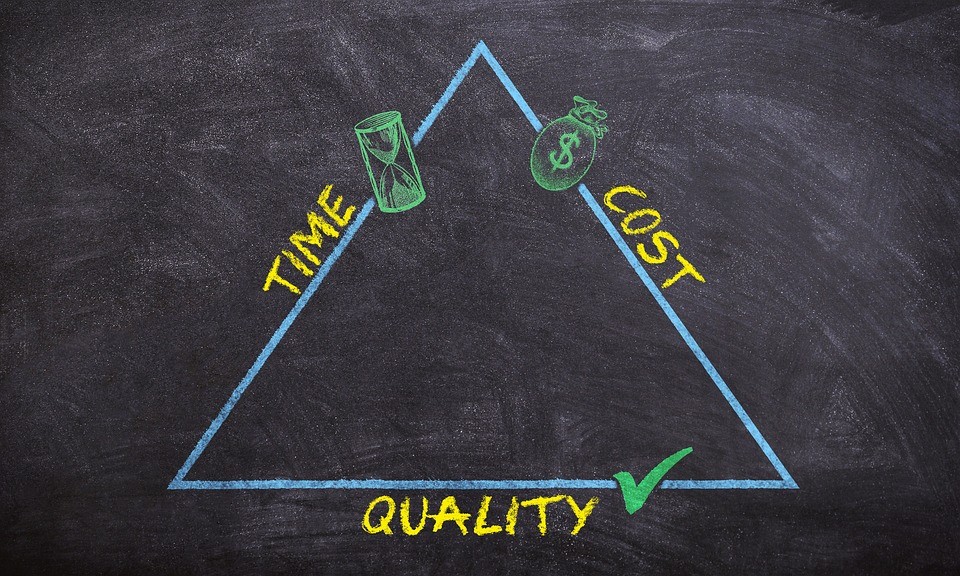If you’re going to swim in the treacherous digital marketing waters, your business must be agile enough to react to the disruptive marketing forces in your industry.
To achieve this, you need resources that can help your company make the right decisions. That means that you have to look past short-term solutions and embrace the long view required to see returns on your investment in digital marketing.
But there are many challenges, because marketing departments are constantly asked to do more with less. The increased responsibility makes it challenging to efficiently use limited resources to meet never-ending demand.
Negative perceptions and unrealistic expectations often fall upon the department heads. Nokia, for example, is a large company that failed because they were primarily an engineering company that needed increased marketing resources at their disposal.
In order to overcome these challenges, you need to take control of your organization’s brand, identity, and integrity with an efficient assignment of limited resources. With the right marketing tools, you can increase your chances of success while reducing the pain associated with creating digital experience solutions.
Every company needs the right systems and processes to help streamline operations and get instant access to critical information. Implementing the following 7 steps is critical to your success in leveraging your limited resources to meet the seeming unlimited demands you face within your organization. What’s more, doing so will keep you ahead of your competitors.
1. Create a Single Repository of All Your Marketing and Brand Assets

With the right solutions, you can create a single repository for all of your marketing and brand assets, a repository, which can be easily accessed, added to, and maintained. This repository can include digital marketing and brand assets such as logos, photographs, videos, ads, newsletters, catalogs, fact sheets, presentations, brochures, web sites, landing pages, and other forms of digital content.
This is important because most marketing departments have these files in multiple and sometimes insecure places: email, laptop computers, file servers, Dropbox, SharePoint, etc. It’s time-consuming to look for assets in multiple places, not to mention the fact that you are exposing your organization to risk in the form of losing files or unauthorized users gaining access.
Asset management systems, which maintain company assets, minimize life cycle costs and reduce operating and maintenance costs in addition to long-term capital expenses. Life cycles approaches mean utility gets the most assets for the money.
Asset management results in better decision making. Aligning management of company assets with strategic direction supports long-term success. Moreover, you get more meaningful financial reporting covering, and improved reliability.
Duravit started with digital media and layouts all being managed in a file system. They have low investment security for their media assets, an automated catalogue for print, and no process-driven workflow support. They had to manually lie out price lists and endured a high cost for printing.
Now they use a marketing asset management system and have over 50 product attributes like media files stored in a multi-level product program, which is linked to their publication layouts. They enjoy customized workflows, which facilitate better data processing for everyone involved in their publishing process. Online channels are given the same price list content from a single platform.
2. Enable Your Business Users To Find and Download Brand Assets

By incorporating such a system you can give your business users the brand assets they need when and where they need them. Not only does this give your departments the tools necessary to keep business flourishing, but it frees up their time to focus on more important activities.
You save work hours for staff through self-service templates and asset management. This lets your marketing team efficiently manage requests.
It provides your stakeholders with all the digital assets they need to accomplish their jobs effectively, and also accomplishes other things, including:
- Increases overall marketing operational efficiency.
- Helps your team find assets easily without risk of duplication or outdated versions.
- Securesmaterialsinonecentralizedlocation.
- Assetsarenolongerscatteredwithinemails, filesystems, and local machines.
- Enablestakeholderstostayonbrand.
Mercedes-Benz started with no central system for digital media management. There was minimal content being reused and high costs for the redundant data storage.
Now over 200,000 assets including products and information aid all subsidiaries and registered dealers around the world. Their advertising materials are all maintained in the same interface where they can be accessed in six languages by anyone who needs any marketing materials.
3. Track Where Assets Are Being Used and Who Is Using Them

With such a system you can track who is using your assets and where they are using them. This is critical for managing, licensing, content, and risk. Managing your operations with these solutions leads to measurable results and benefits, including:
- More effective resource management
- Increased efficiency in leading your team to focus on revenue generating activities
- Managed expectations by creating transparency
- Improved efficiency and effectiveness of your teams efforts through analytics and reports on your resources and assets
- Better management, communication, and tracking of your brand
FacilitylinQ started with lots of brands and attributes, a complex administration for their product data, no process automation, no data workflows, and no content management. Now they can link their product data to their IT infrastructure and keep their plugin synced to the web shop. Having all product data in one place has supported all internal processes and is a cost saver for the business.
4. Use Templates To Address the Most Common Print Design Requests

Anyone within a company should be able to create new, on-brand assets. Sales personnel, marketing staff, anyone can create things like posters, brochures, newsletters, fact sheets, ads, all on their own. They just type into a template, which adjusts the fonts accordingly, and they create an instant sales asset, one that is beautiful and on-brand. The file is sent to marketing for approval and if necessary, the marketing team can fulfill a print order saving your organization hundreds of hours of work, not to mention hundreds of e-mails back and forth.
Evobus started as an outdated online shop that was not expandable, was difficult to maintain, and had an expired contract with their previous payment service provider. Now they use an asset management system to connect content like pictures and product details with internal campaigns all from the same spot.
5. Measure the Effectiveness and Utilization of Your Resources

You can see marketing ROI among other analytics all of which are paramount to the success of your marketing department, and your entire organization. Marketing analytics let you monitor campaigns so that each dollar is well spent. With ever shrinking budgets, it becomes painfully obvious how important it is to make sure each dollar spent is bringing back returns. Knowledge is power and the right systems give you the knowledge to recognize which keywords are the most powerful performers, what product design is in demand, what competing interest lie ahead, what industry trends are changing, and where else to deploy your resources.
Winterhalter start with a low value chain for media assets and lacked integration with external systems. They wanted to re-launch their website though so with an asset management system they strengthened their internal engagement with digital media. They now have a central repository and data source for their media assets. All promotional material is also accessible, including operating instructions, pictures, brochures, data sheets, training documents, wiring diagrams, and more.
6. Streamline Project Intake and Management Process To Handle Increased Demand With Fewer Resources

With the right product, you get a task management system to handle quick requests. You also get a project management system for more time-consuming tasks, like setting up an entirely new website instead of editing an existing one.
Sportler started without a centralized system for managing their digital media, low added value and reuse of their existing assets, no automated catalog for their online channel, and no digital catalog with links to the shop. With asset management systems they have fully integrated their products and services with access to all marketing and media for all employees.
7. Measure the Utilization and Demand of Brand Assets

Measuring the utilization and demand for brand assets tells you for example, how many times people in your company downloaded a training photograph posted to an asset management system, how many times your sales team edited a fact sheet, which assets are accessed most often, which ones are generating positive impact, and what demand is surfacing among the rest of the company.
With the right product you get real time reports of keywords people in your company are using.
It’s important to know what people are searching for so you know what assets might be missing. If your sales team is all searching for “TPS report” in your asset management system, and you have no TPS report example, you know that you need to take action and include one.
Ravensburger started with high costs to export their media data and no supporting system. Now they have simplified the handling between business units and partners while also enjoying a foundation for automated publications across all of their channels. Over 840,000 media assets are handled in an automated system that offers referencing for media attributes and material numbers as well as mass indexing.
Seize the Moment
By implementing these seven strategies, you can streamline the systems and processes in your organization, eliminate waste, and most importantly, see a boost in your ROI. It’s important to seize the moment and make changes now that will pay off down the road. Too many business owners fall prey to paralysis by analysis, and continue doing things the same way despite ample evidence that it’s not working. Take the steps necessary to grow your business, and you’ll begin to see positive changes.





